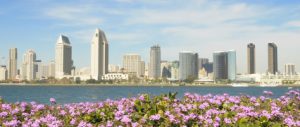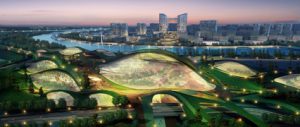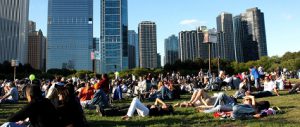Cass Gilbert, architect of New York’s early 20th-century Woolworth Building, called skyscrapers “machines for making the land pay”. But skyscrapers were always more about ego than profit.
At the southern end of London Bridge, early 2012 will bring the topping out of the US$1.1 billion Shard, the tallest building in the European Union. Across the river Thames, The Pinnacle, the loftiest tower in the City of London – London’s main financial district – is being built. This year, the construction was announced in Jeddah of the world-record-breaking Kingdom Tower, which at over one kilometre high would top Dubai’s Burj Khalifa.
Costly to build, hard to negotiate: why do developers keep trying to go so high? “You have to pay a lot more up front but you want it to be an iconic design, one that people want to be involved in and one they want to keep,” says Khalid Affara, head of Arab Investments, the group behind the 288-metre Pinnacle. “It means you have guaranteed longevity.”
After aircraft smashed into New York’s Twin Towers a decade ago, there was a moment when it seemed the skyscraper would forever embody the fear of catastrophe. Yet the Freedom Tower being built beside the Ground Zero site displays the skyscraper’s surprising resilience. The risk for developers is more that, by having so much of their ego vested in the project, they forget to pay attention to economic realities.
In pure construction-cost terms, it is much more expensive to go up than to go low and wide. Cities are littered with examples of what happens when the dream of building the tallest, the pointiest or the most improbable tower has met with an unaccommodating economic reality. Even in dense metropolises such as London, where planning permission is difficult and expensive to secure, the streets are increasingly punctuated with ambitious schemes, many of which lurched from start to mothballing during the recent financial crisis.
Even the Shard – designed by Renzo Piano, co-architect of Paris’s Centre Pompidou – nearly came unstuck. Had it not been for a Qatari consortium enamoured of owning a share of the London skyline, the project would almost certainly have been abandoned.
“The single biggest risk of building a skyscraper is not money. It’s time,” says Affara. “You start building and can maybe see the market four or five years ahead, but there is not a chance in hell that you can figure out where it will be in seven or eight years. But if you get it done and can let it, you are sitting on a building with perhaps one million square feet [about 93,000 square metres] that … unlike lots of the smaller buildings, won’t be demolished in 20 years to make way for something else.”
The precarious state of financing these projects has led to one of the most radical transformations in skyscrapers in recent years – the arrival of residential space in the top floors. From the advent of the early towers such as Gilbert’s 1913 Woolworth Building – in its time the world’s tallest – the skyscraper has been an office block in a central business district where land was scarce and prices high. But developers have discovered a demand for rooms with a view, far above the city.
Most contemporary skyscrapers, from the Shard to the Burj Khalifa, now offer apartments. New York’s 8 Spruce Street, designed by Frank Gehry of Guggenheim Museum Bilbao fame, is almost entirely residential. This allows developers to pre-sell and thus part-fund the construction process.
One draw for prospective occupants is when a development is designed by a “starchitect”, or star architect, in the Gehry/Piano mould. These buildings are as much about hype as about height and the big names help not only with marketing but also with winning permissions; cities are flattered to boast an icon by a known figure.
The upside is that good architects attempt to bring real interest and quality; the downside is that each competes with the other for the most outlandish design. For a complex, layered city such as London, the result can be an incoherent mess of individual sculptural gestures.
German-born but Beijing-based Ole Scheeren is the architect behind the MahaNakhon tower in Bangkok, which appears to pixellate into the chaos characteristic of the street life below. “As dense cities in Asia prove themselves to be the most sustainable ways of living,” he says, “the skyscraper becomes an inevitability. The challenge is to ask how can we reconnect the skyscraper to the city, both where it encounters the ground and in its verticality … How can the tower project the life inside itself back out into the urban realm?”
The contemporary skyscraper scrapes a fine line between architectural ambition, superlative-laden marketing and metropolitan vanity. They are rarely hugely profitable, seldom truly innovative and do not often improve a city. Yet they represent a seemingly indestructible dream, a way of imprinting an idea not only on a site but also on an entire conurbation. All those spiky skylines have become a kind of electrocardiogram of dynamism. No city wants to flatline.
Copyright © The Financial Times Limited 2011
www.ft.com/home/uk
Homepage image of the Shard in London by Lushan Huang



